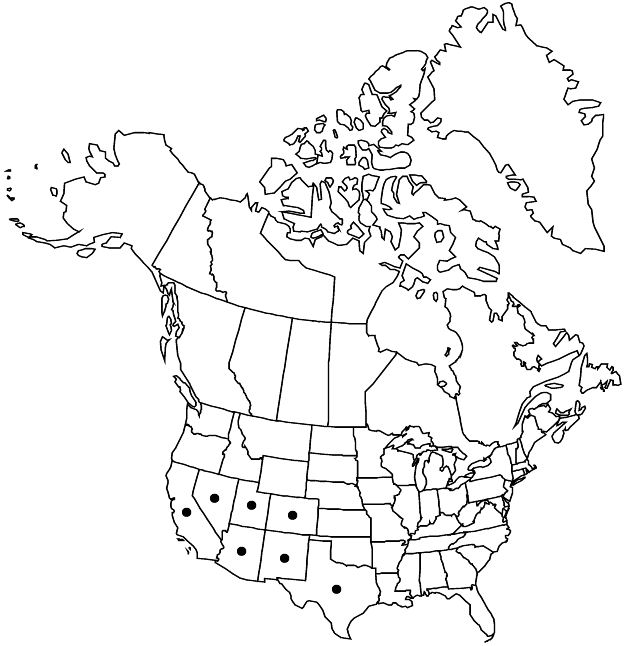Difference between revisions of "Arceuthobium divaricatum"
Rep. U.S. Geogr. Surv., Wheeler, 253. 1879.
FNA>Volume Importer |
FNA>Volume Importer |
||
| Line 52: | Line 52: | ||
|publication year=1879 | |publication year=1879 | ||
|special status= | |special status= | ||
| − | |source xml=https://jpend@bitbucket.org/aafc-mbb/fna-data-curation.git/src/ | + | |source xml=https://jpend@bitbucket.org/aafc-mbb/fna-data-curation.git/src/f6b125a955440c0872999024f038d74684f65921/coarse_grained_fna_xml/V12/V12_24.xml |
|genus=Arceuthobium | |genus=Arceuthobium | ||
|species=Arceuthobium divaricatum | |species=Arceuthobium divaricatum | ||
Revision as of 18:16, 24 September 2019
Plants usually forming localized local infections only, sometimes forming small nonsystemic witches' brooms. Stems olive green, orange, or reddish brown, glaucous; secondary branching fanlike, branches 8(–13) cm, slender, third internode 6–15 × 1–2 mm, dominant shoot 1.5–4 mm diam. at base. Staminate pedicels absent. Staminate flowers radially symmetric, lenticular in bud, 2.5 mm diam.; petals 3, light yellowish green. Berries proximally olive or grayish to bluish green, distally olive green to brown, glaucous, 3.5 × 2 mm. Seeds ellipsoid, 2 × 0.9 mm, endosperm bright green. 2n = 28.
Phenology: Flowering Aug–Sep; fruiting Sep–Oct.
Habitat: Pinyon-juniper woodlands.
Elevation: 1200–3000 m.
Distribution

Ariz., Calif., Colo., Nev., N.Mex., Tex., Utah, Mexico (Baja California).
Discussion
Meiosis occurs in July, with fruits maturing 13 months after pollination.
Arceuthobium divaricatum is parasitic only on pinyon pines. Its principal hosts are Pinus edulis and P. monophylla, but it can also parasitize P. californiarum, P. cembroides, P. discolor, and P. quadrifolia. Most infections are localized; however, over time small witches’ brooms can form that are cryptic given the shrubby habit of the host tree. Pinyon dwarf mistletoe was classified in sect. Campylopoda (F. G. Hawksworth and D. Wiens 1972) as was another parasite of pinyons from Mexico, A. pendens (Hawksworth and Wiens 1980). Isozyme data first showed that these species are not part of sect. Campylopoda (D. L. Nickrent 1996) and this was later confirmed with DNA evidence (Nickrent et al. 2004). Moreover, the two pinyon dwarf mistletoes are not closely related to each other; A. divaricatum is close to A. douglasii, and A. pendens is sister to A. guatemalense Hawksworth & Wiens of Mexico and Guatemala.
Selected References
None.